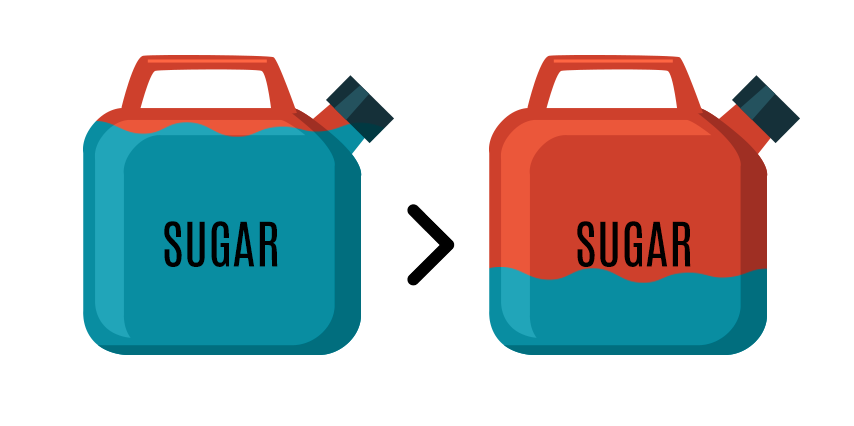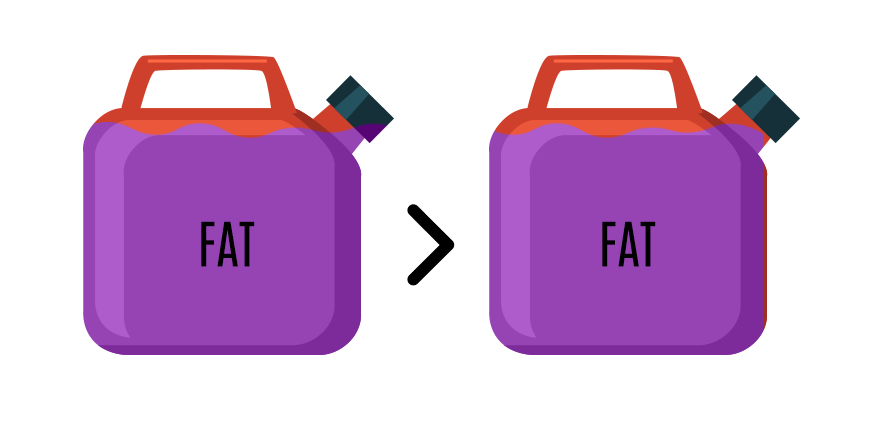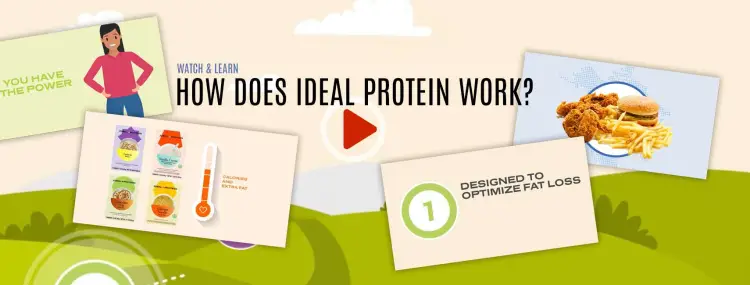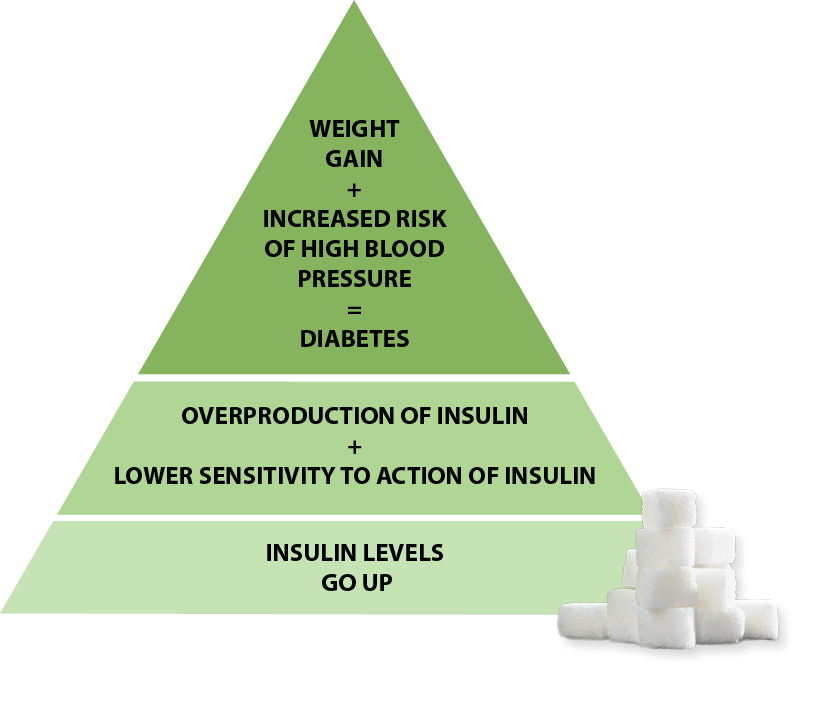Learn the Details
Breaking Down the Ideal Protein Protocol
Phase 1:
Weight Loss
The Weight Loss phase is designed to optimize fat loss through nutritional ketosis (a safe and natural state in which the body mobilizes stored fat as its alternative energy source). Lean body mass is preserved through an adequate daily intake of high biological protein. Essential nutrients are provided through daily supplements, water, and low-glycemic vegetables.
You’ll stay on Phase 1 until your weight loss goal is achieved. You’ll be eating three Ideal Protein foods a day – we have many to choose from. We’ll talk about that in more details shortly. During this phase, you’ll also be eating plenty of vegetables, and a dinner protein of your choice like lean meat, chicken or fish. During this phase, you’re getting into ketosis and becoming a fat-burning machine.
Followed until weight loss goal is achieved:
3 Ideal Protein foods per day
+ Plenty of vegetables
+ Dinner protein of your choice*
*According to the Ideal Protein weight loss protocol
Phase 2:
Stabilization
Following weight loss, the body fights to regain lost weight by increasing hunger and burning fewer calories. The purpose of the Stabilization Phase is to adjust macronutrient intake (macronutrients are your protein, fat and carbs) in the right proportions to effectively manage hunger, promote greater satiety and maintain weight loss. Weekly follow-up sessions are designed to monitor the reintroduction of carbohydrates into your diet as you learn how to change your relationship with food and eat healthier.
During this phase, you’ll get another meal with a protein of your choice, replacing one of the Ideal Protein foods. This phase may last a minimum of two months to ensure weight stabilizes.
2 Ideal Protein foods per day
+ Plenty of vegetables
+ Reintroduction of complex carbs
+ Lunch protein of your choice*
+ Dinner protein of your choice*
*According to the Ideal Protein weight loss protocol
Phase 3:
Maintenance
Welcome to your new, healthier life.
For the first 12 months following Stabilization, you’ll continue to receive ongoing education, support, and meal planning strategies from your coach and clinic. In addition to physical check-ins, you’ll have the option to stay connected to your coach and clinic through the app and the Smart Scale.
You’ll learn how to be more mindful when you’re eating, and now you understand how and why your body gains weight and how to avoid it. We’ll continue to support you with helpful tips and strategies for a healthy life and maintaining weight loss.
You’ll be empowered to make smarter, healthier choices including
- Mindfulness of what you eat and how much you're eating.
- Understanding how and why your body gains fat and how to avoid it.
- Having fun with your food by adding variety to your meals.
Ideal Protein Foods: Make great and tasty choices
We have over 80 delicious foods to choose that are tasty and easy to prepare. They are made with high-quality protein to keep you full. Foods include drinks and snacks and also options like omelets, mashed potatoes, soups, chicken and beef, and more.
Ideal Protein combines a medically-designed, ketogenic protocol with one-on-one coaching
One on one personalized coaching in the form of weekly body composition, detailed nutritional education, guided meal planning and ultimately, individualised macronutrient analysis, plus the ketogenic protocol, are the secrets to your success on Ideal Protein. The protocol is safe and it’s effective. This is because it protects you from muscle loss since it supports muscles with adequate amounts of protein. By getting into ketosis, we’re helping you reset your body to burn fat. Ideal Protein provides supplements to replace any lost vitamins and minerals missed as we restrict certain foods. And last but not least, Ideal Protein is a low carb AND low-fat diet.
It’s nutritionally safe and effective because it:
- Spares muscle loss by supplying an adequate amount of protein
- Resets the body to burn fat while retaining muscle
- Replaces vitamins and minerals you miss from certain foods, with supplements
- Is low-carb, low-fat, and provides adequate protein
Let’s talk about how the body is designed to gain weight.
We talked about the typical North American diet. It’s typically filled with a lot of sugar. But did you know…that 4 grams of carbohydrates become 1 teaspoon of sugar in the body?
An average slice of bread contains at least 20 grams of carbohydrates, which represents the equivalent of 5 teaspoons of sugar. And this does NOT take into effect all of the other sugar sources like sauces, jams, and so on. So we’re consuming a lot of sugar daily!
Why is sugar a big deal?
Our bodies love sugar; it’s a quick energy source that our body burns first. When we consume a lot of sugar, our insulin levels go up as a result.
Over time, this repeated pattern of eating too much sugar and producing too much insulin leads to a lower sensitivity to insulin's actions.
This can lead to weight gain and an increased risk of developing conditions such as high blood pressure, high cholesterol, and diabetes.
How does Ideal Protein’s ketogenic protocol help you lose weight?
The protocol is designed to optimize fat loss through ketosis, which is a safe and natural state in which the body mobilizes stored fat as its alternative energy source. You'll remain in Phase 1 until you have reached your weight loss goal.
Th e body essentially has three fuel sources or “fuel tanks” that it can draw from to support our daily energy requirements. These fuel sources are sugar, protein and fat. Because sugar is the quickest and easiest source of the three, the body will always draw from this tank first. And because the average person consumes a daily diet that’s comprised mostly of sugar (in the form of carbohydrates), this is often the fuel tank that is ever used.
e body essentially has three fuel sources or “fuel tanks” that it can draw from to support our daily energy requirements. These fuel sources are sugar, protein and fat. Because sugar is the quickest and easiest source of the three, the body will always draw from this tank first. And because the average person consumes a daily diet that’s comprised mostly of sugar (in the form of carbohydrates), this is often the fuel tank that is ever used.
Unlike our “fat tank,” our “sugar tank” has limited storage capacity and therefore relies on the constant replenishment from our diets. Our intake of carbs—from fruits and vegetables to bread, pasta, cookies, soda, candy and alcohol—provides more than enough sugar to keep this fuel tank filled. And if by chance it starts to run low, our body will send out “prompts” and “reminders” in the form of hunger and cravings in an attempt to refill the tank!
Ideal Protein helps to get you into this fat-burning state of ketosis by restricting carbohydrate intake in Phase 1. This process is supported by our tasty Ideal Protein foods, micro-nutritional supplements and most importantly, our coaching.
Getting into ketosis
For many, the first few days on the protocol may be the most challenging as the body adjusts to a low carbohydrate diet. This sudden withdrawal of sugar, the body’s preferred energy source, may prompt some uncomfortable side effects such as hunger or headaches or other manageable effects. The good news is that by week’s end, many—if not all—of these side effects subside as the body transitions into fat burning.
Because certain tissues in the body and brain are dependent on glucose as its only fuel source, our bodies evolved with a backup “glucose generator” that kicks in during times when our glycogen tank is running low. This “glucose generator” converts amino acids (broken down from dietary protein and/or muscle) into glucose. But this process can’t keep up with the body’s energy demands. For this, it turns to its most treasure energy tank: fat!

DAYS 1-3
Depleting sugar tanks

DAYS 3-4
Making new glucose

DAYS 4-7 & BEYOND
Tapping the fat tanks and
becoming a fat-burning machine
With continued carbohydrate restriction, at or around days 4 or 5, the body may already begin mobilizing stored fat for fuel. Keep in mind that up until now, every cell in your body has been running mostly on sugar (glucose)! It can take days, possibly weeks, before the body becomes proficient at using ketones for energy. This is called becoming “keto-adapted.”
In the days and months to follow, the body is a fat-burning machine, as long as you stay on the Protocol. Even the slightest deviation, whether it’s that “one” glass of wine, a piece of bread from the breadbasket or even “bites and tastes” here and there, can stop this process in its tracks and send you back to the sugar tank! Once there, you will have to “drain the tank” all over again. So, it’s important you stick to the protocol to see results, and your coach will help you do that.
Getting into ketosis
For many, the first few days on the protocol may be the most challenging as the body adjusts to a low carbohydrate diet. This sudden withdrawal of sugar, the body’s preferred energy source, may prompt some uncomfortable side effects such as hunger or headaches or other manageable effects. The good news is that by week’s end, many—if not all—of these side effects subside as the body transitions into fat burning.
Because certain tissues in the body and brain are dependent on glucose as its only fuel source, our bodies evolved with a backup “glucose generator” that kicks in during times when our glycogen tank is running low. This “glucose generator” converts amino acids (broken down from dietary protein and/or muscle) into glucose. But this process can’t keep up with the body’s energy demands. For this, it turns to its most treasure energy tank: fat!

DAYS 1-3
Depleting sugar tanks

DAYS 3-4
Making new glucose

DAYS 4-7 & BEYOND
Tapping the fat tanks and
becoming a fat-burning machine
With continued carbohydrate restriction, at or around days 4 or 5, the body may already begin mobilizing stored fat for fuel. Keep in mind that up until now, every cell in your body has been running mostly on sugar (glucose)! It can take days, possibly weeks, before the body becomes proficient at using ketones for energy. This is called becoming “keto-adapted.”
In the days and months to follow, the body is a fat-burning machine, as long as you stay on the Protocol. Even the slightest deviation, whether it’s that “one” glass of wine, a piece of bread from the breadbasket or even “bites and tastes” here and there, can stop this process in its tracks and send you back to the sugar tank! Once there, you will have to “drain the tank” all over again. So, it’s important you stick to the protocol to see results, and your coach will help you do that.
Getting into ketosis
For many, the first few days on the protocol may be the most challenging as the body adjusts to a low carbohydrate diet. This sudden withdrawal of sugar, the body’s preferred energy source, may prompt some uncomfortable side effects such as hunger or headaches or other manageable effects. The good news is that by week’s end, many—if not all—of these side effects subside as the body transitions into fat burning.
Because certain tissues in the body and brain are dependent on glucose as its only fuel source, our bodies evolved with a backup “glucose generator” that kicks in during times when our glycogen tank is running low. This “glucose generator” converts amino acids (broken down from dietary protein and/or muscle) into glucose. But this process can’t keep up with the body’s energy demands. For this, it turns to its most treasure energy tank: fat!

DAYS 1-3
Depleting sugar tanks

DAYS 3-4
Making new glucose

DAYS 4-7 & BEYOND
Tapping the fat tanks and
becoming a fat-burning machine
With continued carbohydrate restriction, at or around days 4 or 5, the body may already begin mobilizing stored fat for fuel. Keep in mind that up until now, every cell in your body has been running mostly on sugar (glucose)! It can take days, possibly weeks, before the body becomes proficient at using ketones for energy. This is called becoming “keto-adapted.”
In the days and months to follow, the body is a fat-burning machine, as long as you stay on the Protocol. Even the slightest deviation, whether it’s that “one” glass of wine, a piece of bread from the breadbasket or even “bites and tastes” here and there, can stop this process in its tracks and send you back to the sugar tank! Once there, you will have to “drain the tank” all over again. So, it’s important you stick to the protocol to see results, and your coach will help you do that.
Ideal Protein for bariatric surgery
Patients are required to follow a high-protein low-fat diet similar to Ideal protein for anywhere from 6 months to 10-15% of body weight prior to surgery. Many bariatric surgery centers offer Ideal protein protocol. At the minimum, surgery patients are required to have a two week liquid diet prior to surgery.
More resources can be found here:
Obesity Help Website
Cedar Park Bariatrics





